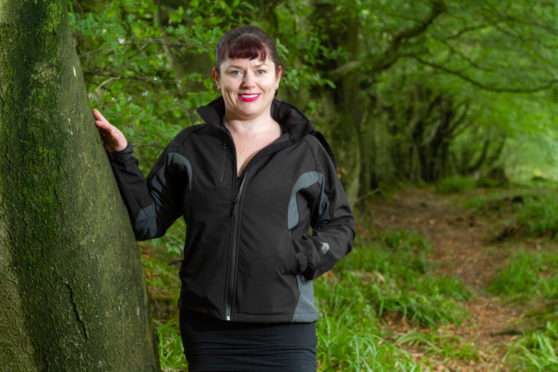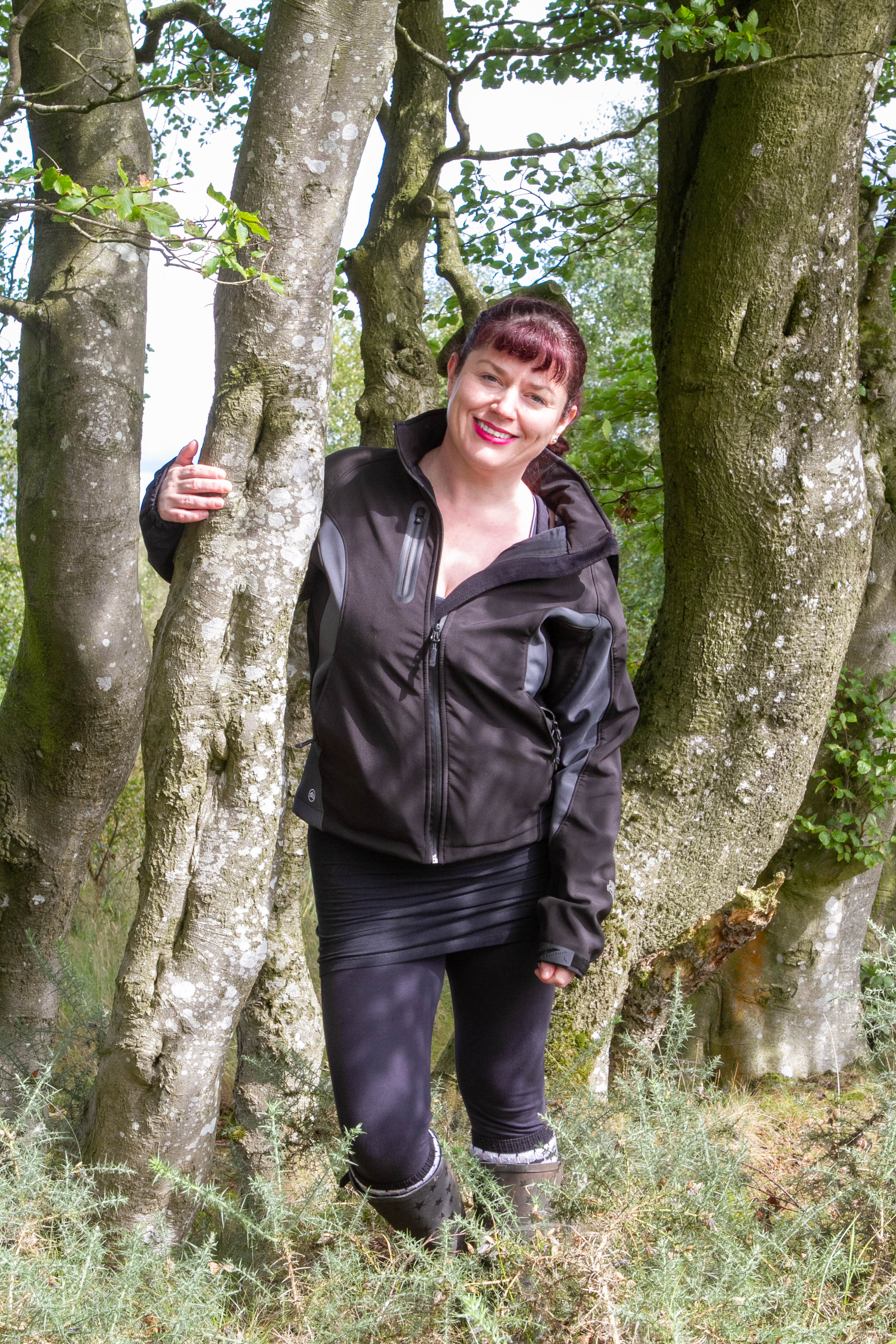
I had committed to buying Camp Wood without seeing it – and only visited it for the first time a day before the auction.
I had to rely on the relationship I have with my land agent (I live in Aberdeen and the development is just outside the town of Lanark) but as we had been looking at so many different sites, I knew they had a fair idea of what I was looking for.
We had gone in for other sites and not got them, so after a year of setbacks, I was giving it one last try.
It was my last bid… I put in £60,000 and got it.
Camp Wood – where I’m launching The Encampment Project – feels like it’s in the middle of nowhere. It’s 32 acres of wild forest land with the ruins of a Roman Camp running through it.
And I’m opening it up to hutters, and the community.
The first time I saw it, I was overwhelmed by the sheer size of the site and its potential. There’s a magical feel to it.
Although it’s sandwiched between Lanark and the motorways, when you are in it, it feels very secluded. There’s a real sense of freedom, a mindfulness that comes over you. The Tinto hills are just to the east and you can see them from parts of the forest.
The first time I walked through it, I was a bit fearful of getting lost. The “health and safety” in me thought I’d fall over and break my ankle. It’s all so dense, and I’m a desk-bound city chick, so I was a completely out of my comfort zone. I wasn’t sure what I’d let myself in for…
But the more I go to the forest, the more I love it.
You can spend hours there then realise you haven’t thought of anything else apart from trying to get through trees, just concentrating on walking, putting one foot in front of the other, picking things up. I feel like a different person when I come out of it.
I decided to explore the idea of hutting when my first plans to buy woodland to develop into an events’ site or eco-project weren’t going anywhere. The Encampment is all about Hutting – which is just simple, rustic buildings, like mountain bothies, that allow people to be outdoors and feel part of nature. But The Encampment will offer so much more.
I have space for 14 huts – one for me, one for the charity/community, and the rest for “hutters”, who will be able to lease their own hut for upwards of 15 years and can call it their own little space in the forest.
I am hoping that the hutters will become engaged with the local community and we can offer help to people who need it, practical help.
But, if the hutters just want to come every weekend to enjoy the great outdoors, that’s fine too.
The forest has no wifi, but we do have composting toilets and we hope to grow our own vegetables and other edible plants – I want the hutting community to be self-sufficient.
Everything you need for your time in the forest is provided by the forest.
I’m looking into getting our own bees, taking in chickens, having activities such as yoga and painting, things like that.
I want the forest to feel like a retreat, a space to think and recharge.
The sheer size of Camp Woods is impressive, and so are the Roman ruins.
I wanted to turn the fact that these ruins cover almost half of the site into a focal point and give them the importance they deserve.
Historic Environment Scotland is involved and is keen for us to make a feature of them – it’s part of our history and there’s scope to make more of the monument.
I have degrees in environmental biology and law and I run a consultancy in legal compliance.
I’ve worked in the oil and gas industry for years, but now I feel it’s time to change direction and get outside more. I want to enjoy the environment more and get away from the hustle of city life.
I think that having a hut in The Encampment will offer that to nine-to-fivers. Families want to connect with nature and enjoy the countryside the way they did when they were growing up. It’s a place to escape to and reconnect with nature.
For me, it’s not just about changing direction in terms of my career, it’s also an investment plan – but it’s something outdoorsy, a reason for me to be in nature, gaining all the benefits of that.
But for the larger community, I want people to enjoy the countryside and get away from all the demands of phones, wifi, emails and all our daily chores and just enjoy being in the moment, in the forest, and finding time to slow down.
Email louise.witter@clpeu.com
Scotland’s hutting heritage
Huts, shielings and bothies have traditionally provided much-needed escape for city dwellers, as well as shelter for walkers and climbers.
The term but ’n’ ben comes from the Scots language for a two-roomed cottage, and such structures are usually very simple in their design. You won’t find an indoor loo, that’s for sure!
In the ’20s, a community of huts was built in Carbeth, Stirlingshire, to allow returning First World War soldiers to access green spaces.
Today, 140 huts and a thriving population of hutters come to enjoy the rugged landscape.
The building of simple, wooden, structures for living, working and recreation has seen a resurgence in recent years.
This is probably due, in part, to the Thousand Huts campaign, which aims to encourage more people to enjoy low impact hutting in Scotland.
The Mountain Bothies Association cares for more than 100 free-to-use shelters across the country.
If you visit a bothy, it’s essential you abide by the code – make sure you respect other users, respect the bothy, respect the surroundings, respect agreement with the estate, and respect the restriction on numbers.

Enjoy the convenience of having The Sunday Post delivered as a digital ePaper straight to your smartphone, tablet or computer.
Subscribe for only £5.49 a month and enjoy all the benefits of the printed paper as a digital replica.
Subscribe © Chris Austin / DCT Media
© Chris Austin / DCT Media